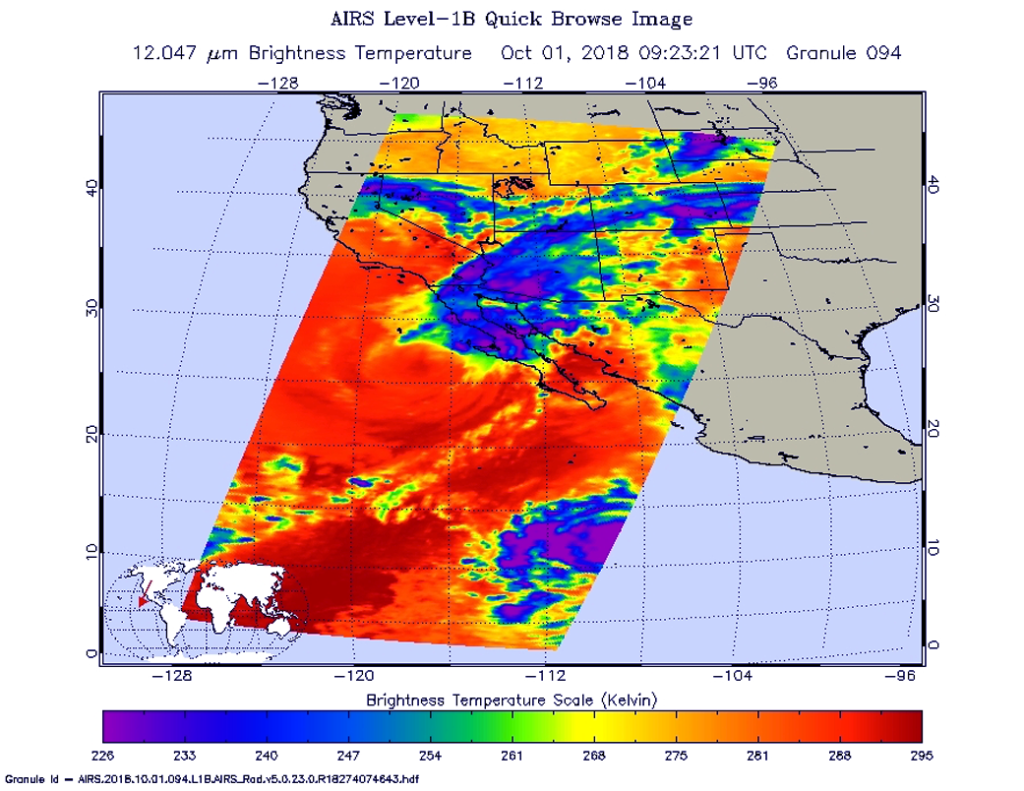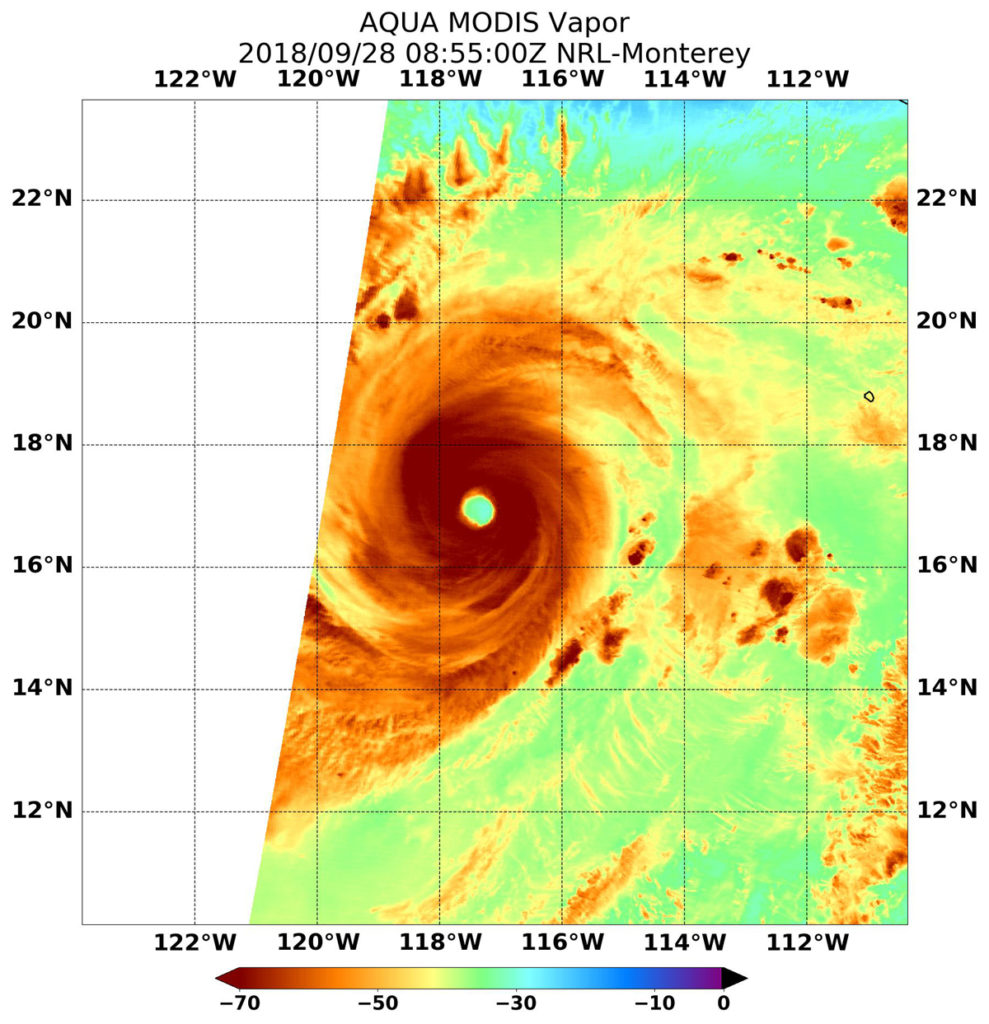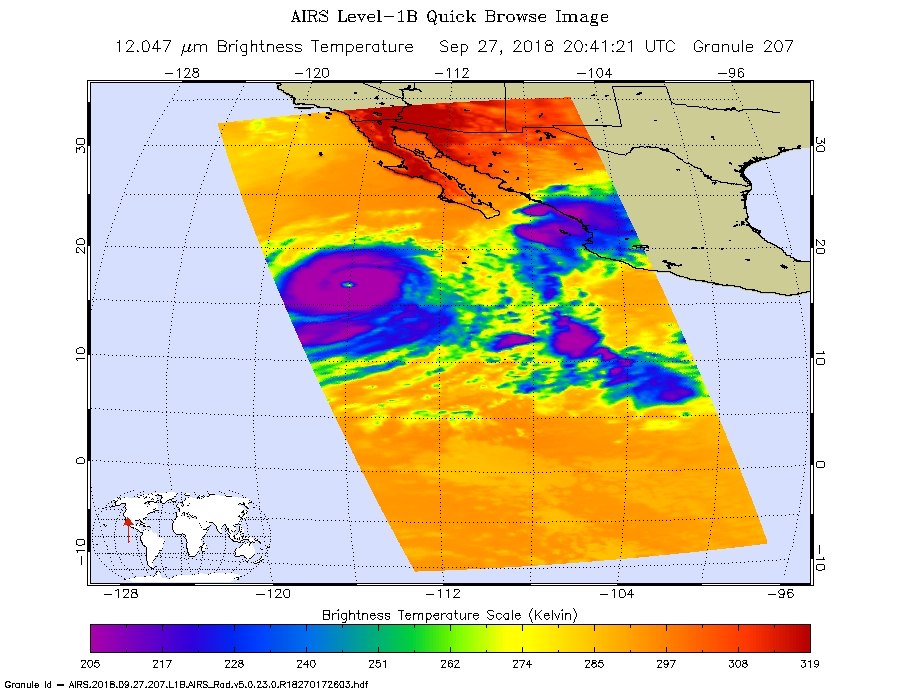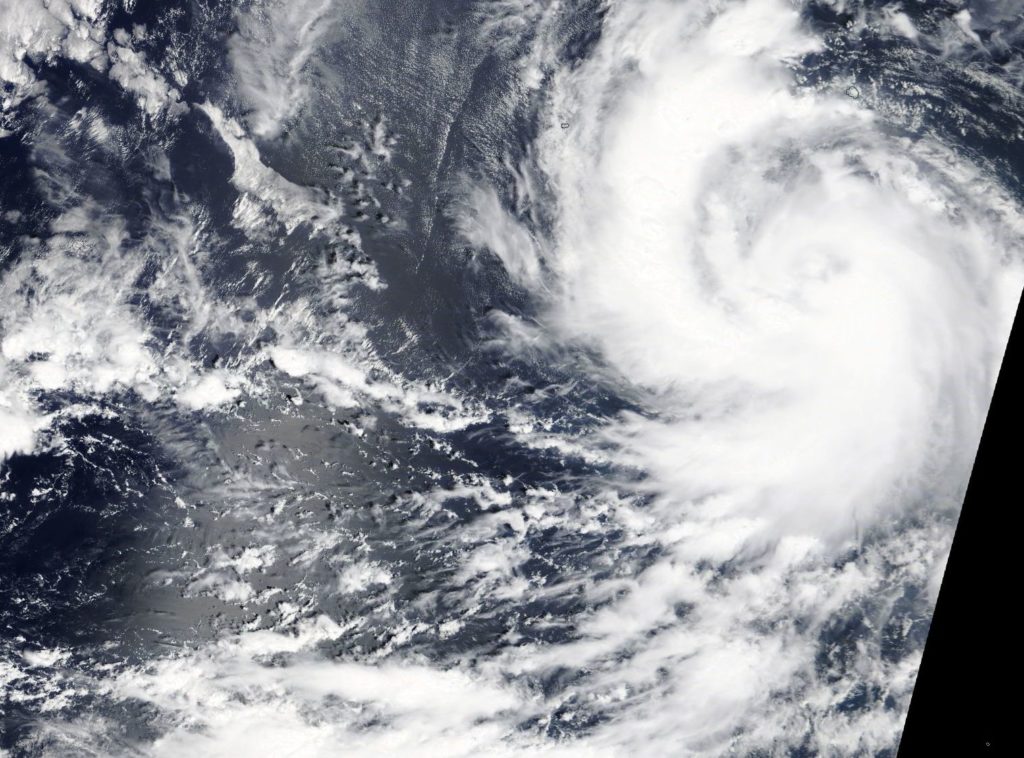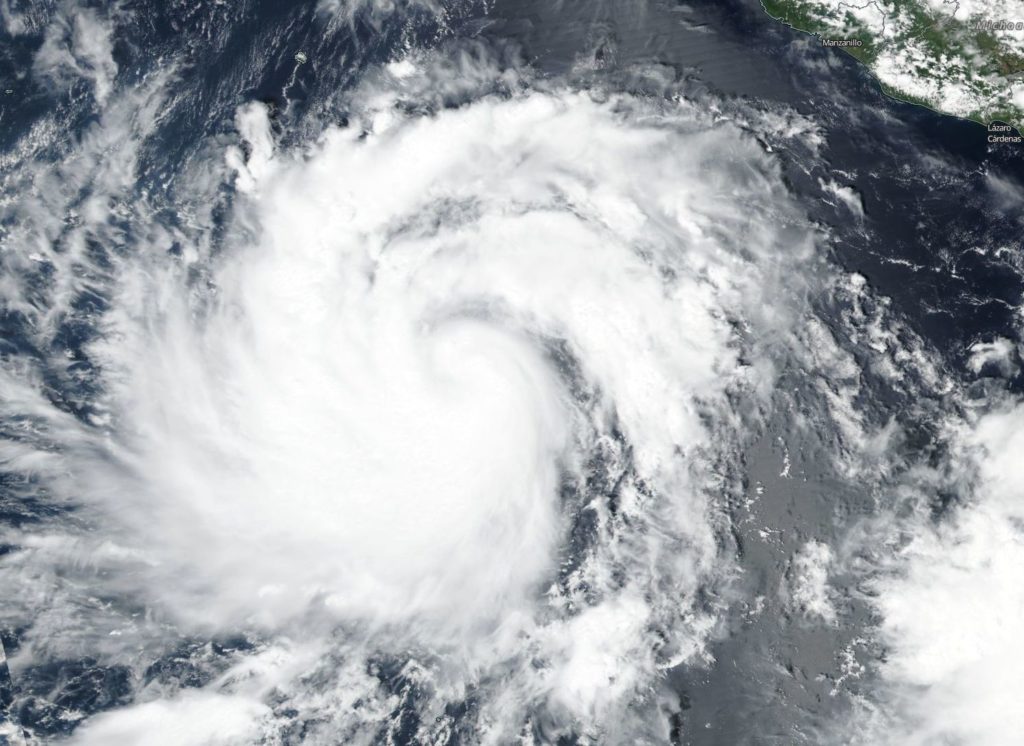Oct. 04, 2018 – Rosa’s Rainfall (from Earth Observatory)
Peaking as a category 4 hurricane on September 28, 2018, over the Eastern Pacific Ocean, Hurricane Rosa weakened before making landfall on the Baja California Peninsula four days later. Still, as the storm’s remnants moved inland, they delivered heavy rain and caused flash floods in northwestern Mexico and the U.S. Southwest.
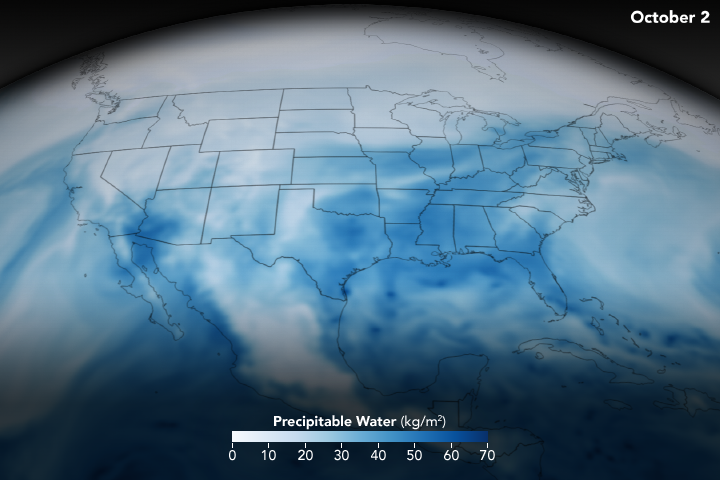
“We can draw parallels between this storm and Hurricane Florence,” said Gary Partyka, an atmospheric scientist with the GMAO at NASA’s Goddard Space Flight Center. “The strength of both weakened tremendously, but both moved enough moisture to produce substantial amounts of rainfall. A hurricane’s category (which describes its maximum winds) is not very important when it comes to flooding.”
The still image and animation above show the atmosphere’s total precipitable water. That is, the depth of water in a column of the atmosphere if all the water in that column fell as rain. The image and animation, compiled from October 1-3, 2018, were created with data from a version of a NASA model known as the Goddard Earth Observing System Data Assimilation System (GEOS DAS), which uses satellite data and mathematical representations of physical processes to calculate what was happening in the atmosphere.
Viewed globally, the model shows large circulation patterns as well as individual storms. This regional view shows Hurricane Rosa as it spun over the East Pacific Ocean and broke up over Baja California and the U.S. Southwest. Dark blue areas represent the highest values of precipitable water.
Partyka says it is important to note that not all precipitable water falls as rain; some water vapor stays behind in the atmosphere. Nor is it a limit on the amount of rain that can fall, which can increase as water vapor moves into the column of air.
“The indicator is useful for showing potential regions where rainfall could be excessive, though you also need a trigger to make the ‘precipitable water’ fall as precipitation,” Partyka said. In this case, Rosa’s remnants and a low-pressure system off the California coast did serve as triggers.
According to the National Weather Service, October 2 was the wettest October day on record in Phoenix, Arizona. More than 2 inches (5 centimeters) of rainfall were measured that day at Phoenix Sky Harbor International. The last time the city saw more than two inches in a day in October was in 1988.
NASA Earth Observatory imagery by Joshua Stevens, using GEOS-5 data from the Global Modeling and Assimilation Office at NASA GSFC. Story by Kathryn Hansen.
Oct. 02, 2018 – NASA’s Aqua Satellite Shows Rosa’s Remnants Soaking Arizona
NASA provided an infrared view of Tropical Depression Rosa’s remnants that showed strongest storms with heaviest rainfall potential were over east central Arizona on Oct. 2. The National Hurricane Center noted that although Rosa had dissipated by 11 a.m. EDT on Oct. 2, the threat of heavy rains and flash flooding continues over the Desert Southwest.
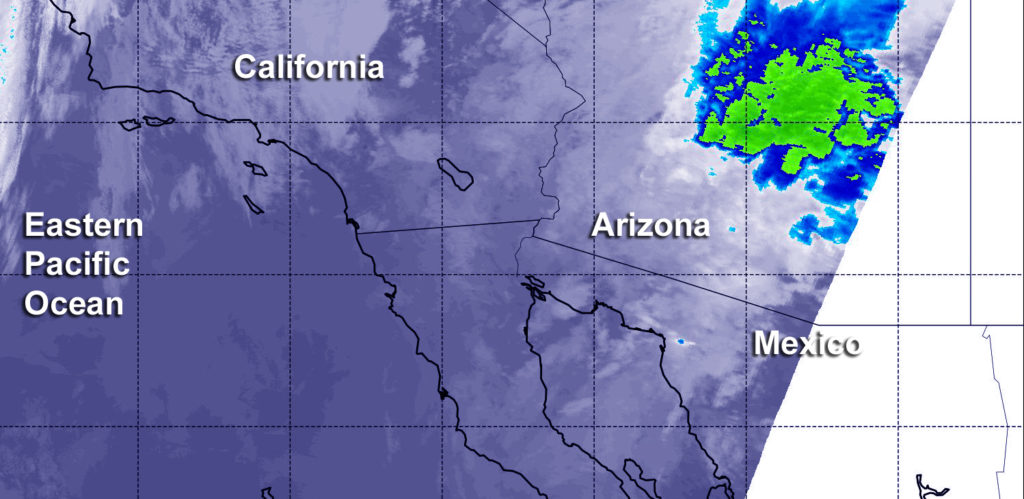
NOAA’s National Weather Service Weather Prediction Center in College Park, Md. noted “Heavy tropical rain from Rosa will bring flash flood threats to the Desert Southwest and Four Corners region over the next couple of days. Flood Watches are in effect for multiple states, including California, Arizona, Nevada, Utah, Colorado and Idaho. There is also a moderate risk of excessive rain for central portions of Arizona.”
Infrared satellite data captured on Tuesday, Oct. 2 at 6:05 a.m. EDT (1005 UTC the Moderate Resolution Imaging Spectroradiometer or MODIS instrument aboard NASA’s Aqua satellite revealed the location of strongest storms with the coldest cloud top temperatures. MODIS found coldest cloud tops had temperatures near minus 63 degrees Fahrenheit (minus 53 degrees Celsius). NASA research has found that cloud top temperatures that cold have the capability to generate heavy rainfall.
Satellite images and surface observations indicate that Rosa has become a trough or an elongated area of low pressure with multiple swirls along its axis. Therefore, Rosa no longer qualifies as a tropical cyclone.
That heavy rainfall potential that NASA’s infrared data showed are reflected in the forecast today, Oct. 2 and tomorrow, Oct. 3. In Baja California and northwestern Sonora, 3 to 6 inches are forecast with isolated 10 inches. In central and southern Arizona 2 to 4 inches are forecast with isolated 6 inch totals are possible in the mountains of central Arizona. For the rest of the Desert Southwest, Central Rockies, and Great Basin, the National Hurricane Center forecast expects between 1 to 2 inches, with isolated totals to 4 inches. These rainfall amounts may produce life-threatening flash flooding. Dangerous debris flows and landslides are also possible in mountainous terrain.
At 11 a.m. EDT (1500 UTC), the remnants of Rosa were located near latitude 29.7 degrees north and longitude 114.2 degrees west. That’s about 95 miles (155 km) south-southeast of San Felipe, Mexico. The remnants are moving toward the northeast near 8 mph (13 kph), and they are expected to move over the Desert Southwest by tonight. Maximum sustained winds are near 30 mph (45 kph) with higher gusts.
For local forecasts, visit: www.weather.gov

